Swallows Nest Types and Nesting Habits
Updated: Jun. 21, 2022
Swallows spend much of their time flying. Learn the birding basics of where to find a swallows nest. Plus learn about swallow nesting habits.
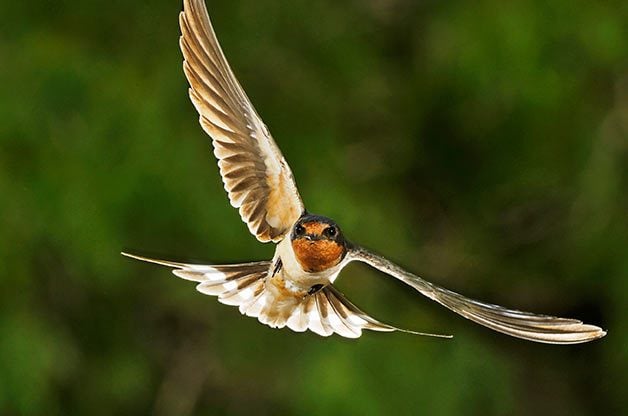
Swallows are different from any other songbird. Their habitat isn’t tied to the woods, meadows or our backyards. Instead, their true home is the sky. These graceful fliers are constantly on the go, ranging widely to feed on swarms of flying insects. They can live practically anywhere as long as they can find places to build their nests. In fact, those nests determine much about their lives. So let’s take a look at swallows nest habits and how these birds raise their young.
Learn to identify 8 types of swallows.
Swallows That Nest in Trees
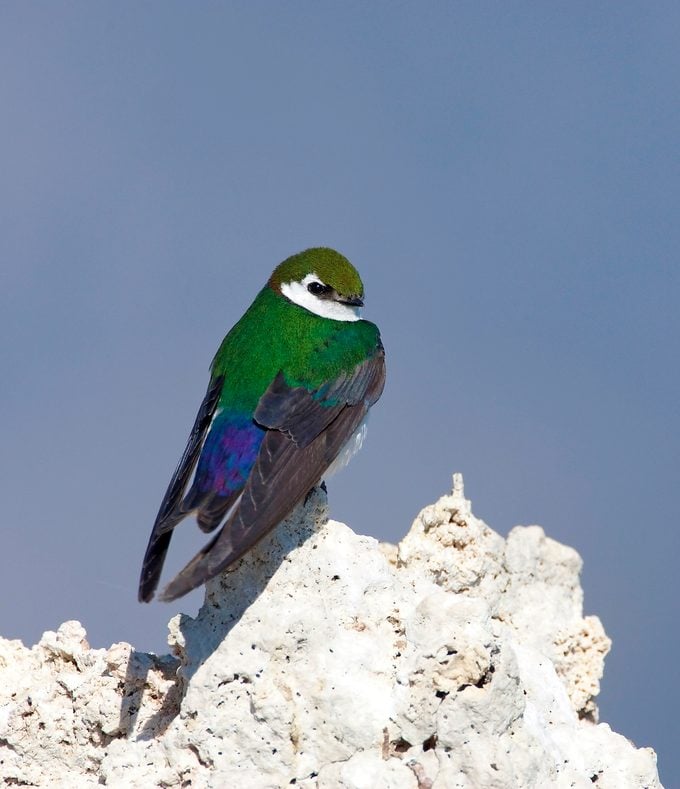
Natural holes in dead tree trunks—whether drilled by woodpeckers or left by decay—provide nesting sites for many kinds of birds. Among them are two swallows with snowy white bellies and iridescent backs: the tree swallow, found from coast to coast, and the violet-green swallow, widespread in the West in summer.
Find out more about burrowing and ground nesting birds.
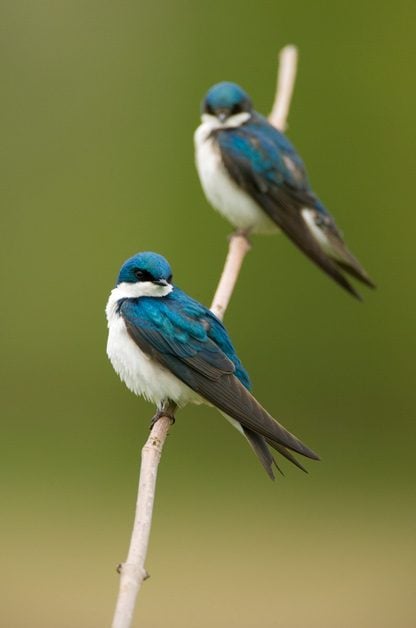
Like other cavity-nesting birds, these swallows will also accept nest boxes if you put them up. The tree swallow has benefited from the popularity of bluebirds, because it can use the same size and style of nest box as bluebirds do. Every year, vast numbers of baby tree swallows hatch out of boxes along “bluebird trails”!
Here’s how to make a DIY bluebird house.
Apartment Dwellers: Purple Martin Nests
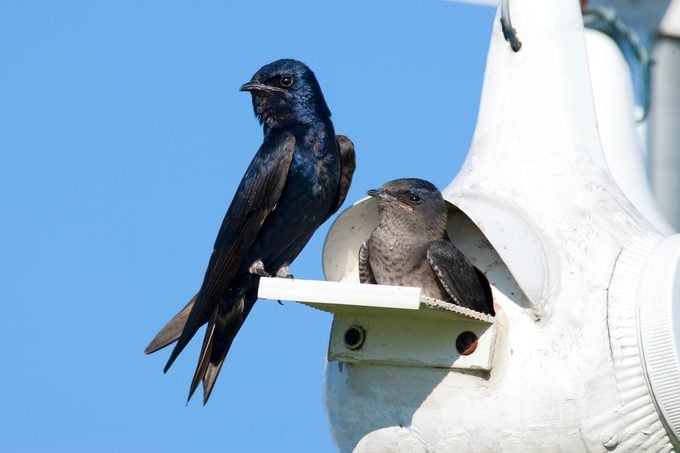
The largest North American swallows, purple martins, once nested mainly in tree holes. They are sociable birds, so they would have to find several holes close together for families to nest in loose colonies.
Today, almost all the purple martins east of the Rockies (and some of those farther west) have adopted nesting boxes put up by their human admirers. These consist of apartment-style houses, often with dozens of rooms. In the far West, however, you’ll find places where martins still nest in tree holes in the traditional way. And in deserts of the Southwest, some purple martins nest in holes in giant cactus forests, finding places where several tall cacti close together have multiple woodpecker holes.
Baby swallows are too cute — here are 16 super sweet photos of them.
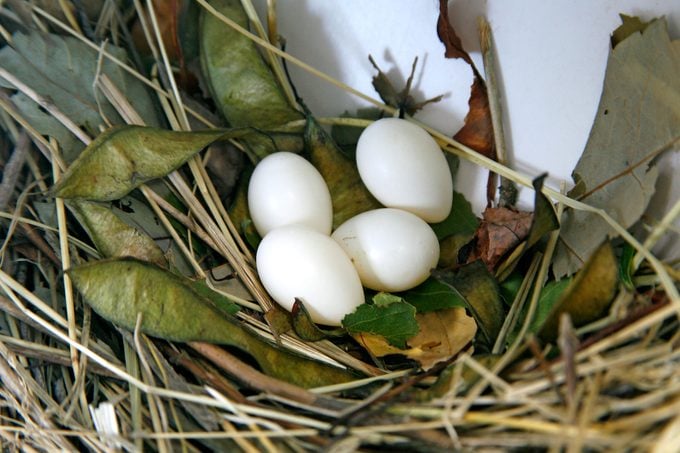
If you want to attract these popular birds, putting up purple martin houses is your best bet. Of course, it doesn’t hurt if you’re near open fields where they like to search and swoop for their meals.
Here’s how to make a purple martin gourd birdhouse.
Swallow That Nest in the Dirt
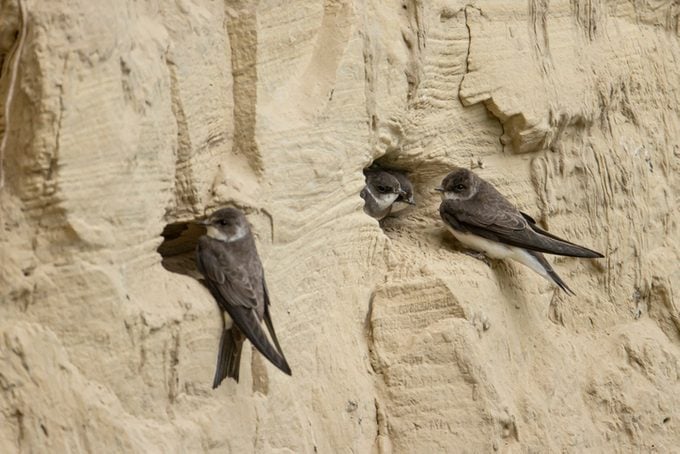
It might seem odd that creatures of the sky would raise their young in nests underground, but that’s exactly the type of nest site that bank swallows and northern rough-winged swallows build. Specifically, their nests are holes tunneled into vertical dirt banks. Both species sport soft brown hues to serve as camouflage when they land at the entrances to their nests.
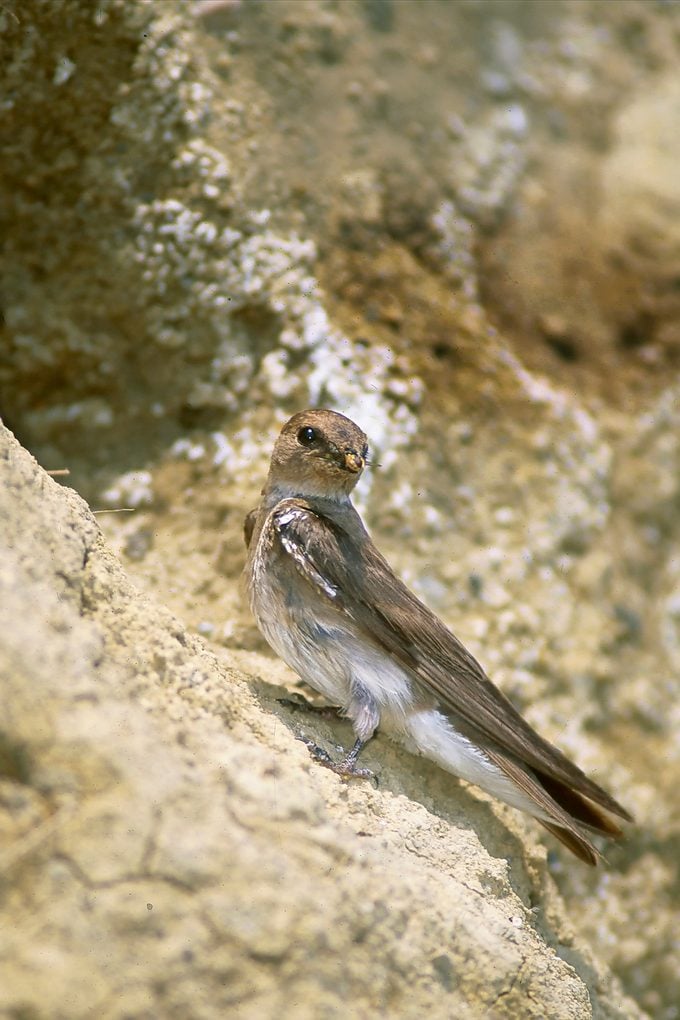
Rough-winged swallows establish their nest sites as isolated pairs, but bank swallows choose to live in colonies. In some places, high dirt banks are riddled with holes, with dozens of pairs of bank swallows nesting close together.
Learn about different kinds of bird nests and how to spot them.
Barn Swallow Nests and Cliff Swallow Nests
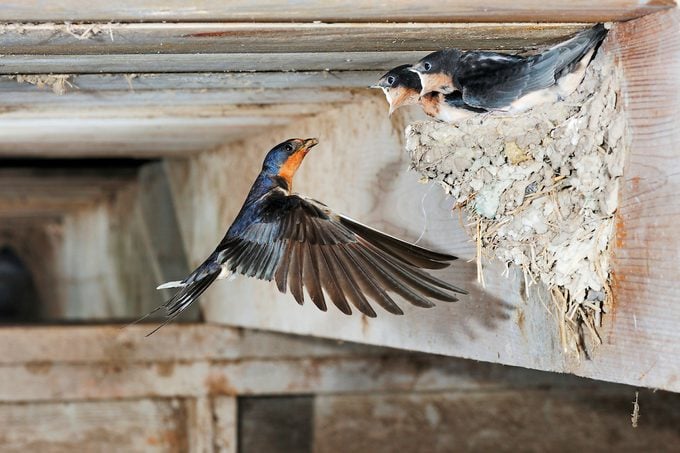
The barn swallow is named for one of its common nesting sites, but it needed shelter long before people built barns. So it would find a shallow cave or a cliff with enough of an overhang to protect its nest. Its cousin, the cliff swallow, would use the same locations, usually nesting in colonies.
After settlers began building barns across the landscape, barn swallows moved in, building their nests on rafters inside. Cliff swallows adopted the outsides of the barns, plastering their muddy nests along the walls under the edges of the roof.
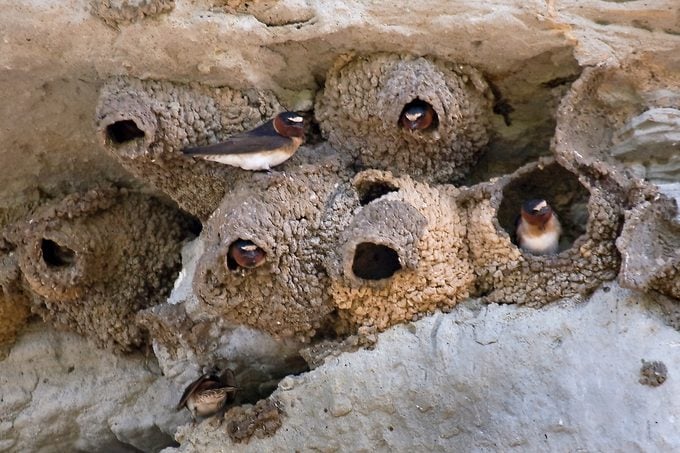
The cave swallow is a special case. This was once a rare bird in the U.S., building its nest in the shadows inside a few caves near the Mexican border. You can still find it in those caves, but now it has also discovered artificial substitutes that are much more widely available. Today there are cave swallow nests under bridges and in culverts all over Texas and in parts of adjacent states.
What is a fledgling? Learn the five stages of a baby bird’s life.
Swallow Nest Boxes and Structures
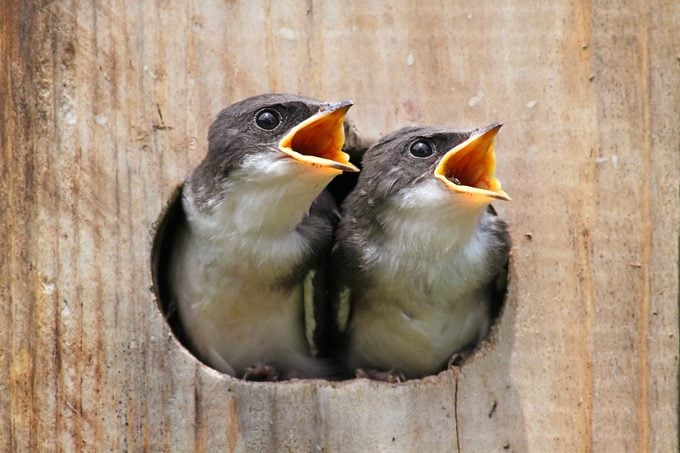
Many of our swallows are undoubtedly more common today than they once were. The cave swallow is just one example. Barn swallows and cliff swallows also build their nests under bridges, as well as in and on barns and other structures, so now they thrive in areas where they would have had no natural place to nest.
Tree swallows, violet-green swallows and purple martins all readily take to birdhouses. Even bank swallows and northern rough-winged swallows take advantage of new artificial dirt banks, such as at road cuts and gravel pits.
Follow these proven tips to attract nesting birds.
Swallow Bird Migration
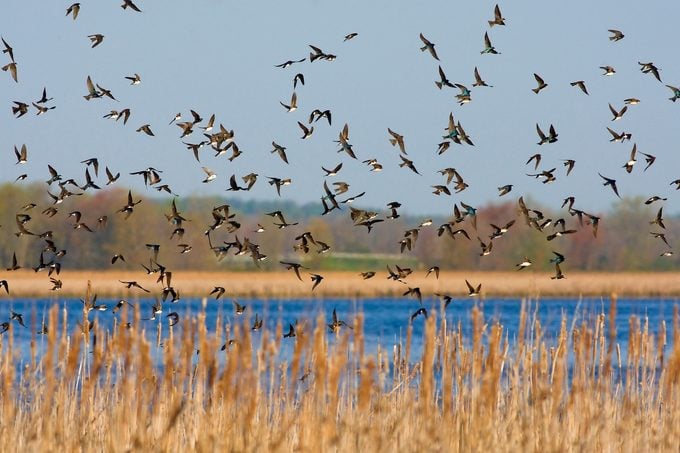
Although their nesting habits differ, members of the swallow family lead similar lives in most other ways. All of them feed on flying insects. Some other songbirds do, too, of course, but those others usually fly out from a perch to catch a single insect and then land again. Swallows may stay on the wing for hours in seemingly effortless flight, traveling far and wide to find swarms of small insects.
When insects disappear in cold weather, swallows migrate to warmer climates. Some, like cliff swallows and purple martins, fly all the way to South America’s Amazon basin. Tree swallows may stay through the season in the southern U.S., because they can survive on berries when cold weather shuts down insect activity.
Before they go south, most swallows gather in large flocks, spending days or weeks foraging and fattening up for their travels. Often they gather near water or over open fields. Flocks may contain hundreds of swallows, or even thousands, including four or five different species. Late summer is the best time to see these gatherings. Watch for swallow flocks circling over ponds or perched on roadside wires, and you may get to admire an abundance of graceful, beautiful world travelers.
Learn 7 fascinating facts about swift birds.
Types of Swallow Nests
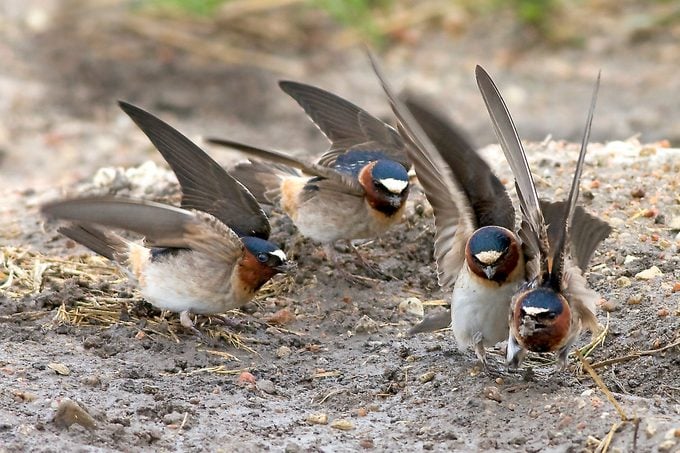
- Barn swallow: An open cup made of pellets of dried mud mixed with grass and lined with feathers.
- Cliff swallow: Plastered against a vertical surface, the nest is a gourd-shaped vessel made of dried mud pellets, with the entrance at one end. The inside has a sparse lining of grass and feathers.
- Northern rough-winged swallow: Situated at the end of a horizontal tunnel in the dirt, the nest is a bulky mass of twigs and weeds, lined with finer grasses.
- Tree swallow: A neat cup of grasses, weeds, pine needles, moss and other plant material, almost always with a soft lining of feathers.
- Purple martin: Inside an apartment in a martin house, the nest is a cup of grass, leaves, twigs, miscellaneous debris and usually some mud.
Psst—this is the only bird nesting material you should put out.
